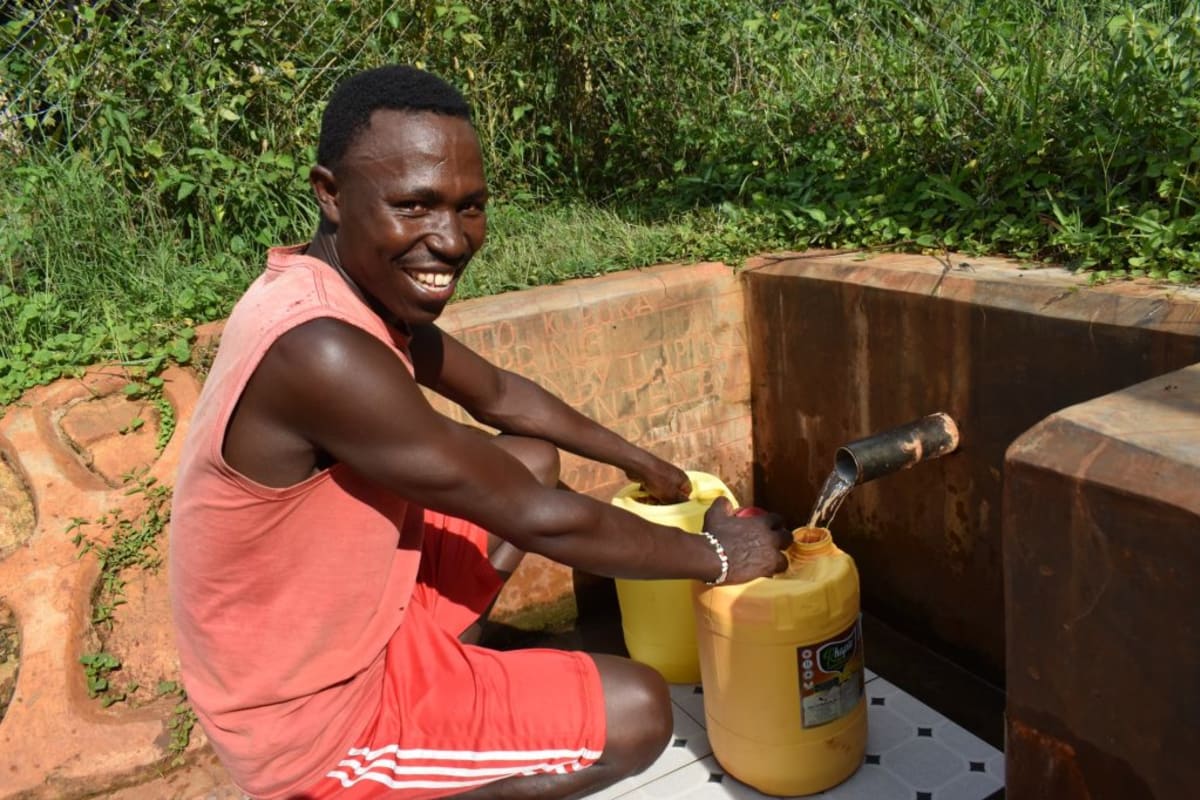The 770 residents of Mwikholo Community have become accustomed to the sore throats and diarrheal disease that come with drinking the water from Festo Kuboka Spring.
There is a protected spring in the next community over, but it takes some of the farthest homes over an hour to fetch water from there.
“Households with travel times greater than 30 minutes have been shown to collect progressively less water. Limited water availability may also reduce the amount of water that is used for hygiene in the household.” (The Relationship between Distance to Water Source and Moderate-to-Severe Diarrhea in the Global Enterics Multi-Center Study in Kenya, 2008–2011) - American Journal of Tropical Science and Medicine
So, instead of wasting the time and energy walking to the distant protected source of water, people manage with the contaminated water and everyday ailments.

"We are now used to [the] flu and sore throats because the other source [of water] is quite far [away]," said 52-year-old farmer Rosemary Matisi, shown above fetching water from the unprotected spring. "It is even hard to know if the water we are drinking is good because it is open, and anything that wants to fall [in and] contaminate the water will easily do so."
"We get tired fetching water from the main source because of the distance from our home to the water point," said 12-year-old John K (shown below). "You end up going to school already tired in the morning."

But during the rainy season, the area around the unprotected spring turns to mud and muck, and so does most of the water.
"The access point is a mess during the rainy season," John explained. "Minor accidents as a result of slipping and falling [are] a normal occurrence."
Whenever this happens, people have no option but to walk an hour or more to fetch water from the neighboring community's spring.
A reliable source of safe water nearby will allow Mwikholo's people to channel their time and energy into more productive and life-affirming tasks.
What We Can Do:
Spring Protection
Protecting the spring will help provide access to cleaner and safer water and reduce the time people have to spend to fetch it. Construction will keep surface runoff and other contaminants out of the water. With the community’s high involvement in the process, there should be a good sense of responsibility and ownership for the new clean water source.
Fetching water is a task predominantly carried out by women and young girls. Protecting the spring and offering training and support will, therefore, help empower the female members of the community by freeing up more of their time and energy to engage and invest in income-generating activities and their education.
Training on Health, Hygiene and More
To hold trainings during the pandemic, we work closely with both community leaders and the local government to approve small groups to attend training. We ask community leaders to invite a select yet representative group of people to attend training who will then act as ambassadors to the rest of the community to share what they learn. We also communicate our expectations of physical distancing and wearing masks for all who choose to attend.
The training will focus on improved hygiene, health, and sanitation habits in this community. With the community’s input, we will identify key leverage points where they can alter their practices at the personal, household, and community levels to affect change. This training will help to ensure participants have the knowledge they need about healthy practices and their importance to make the most of their water point as soon as water is flowing.
Our team of facilitators will use a variety of methods to train community members. Some of these methods include participatory hygiene and sanitation transformation, asset-based community development, group discussions, handouts, and demonstrations at the spring.
One of the most important issues we plan to cover is the handling, storage, and treatment of water. Having a clean water source will be extremely helpful, but it is useless if water gets contaminated by the time it is consumed. We and the community strongly believe that all of these components will work together to improve living standards here, which will help to unlock the potential for these community members to live better, healthier lives.
We will then conduct a small series of follow-up trainings before transitioning to our regularly scheduled support visits throughout the year.
Training will result in the formation of a water user committee, elected by their peers, that will oversee the operations and maintenance of the spring. The committee will enforce proper behavior around the spring and delegate tasks that will help preserve the site, such as building a fence and digging proper drainage channels. The fence will keep out destructive animals and unwanted waste, and the drainage will keep the area’s mosquito population at a minimum.

 Protected Spring
Protected Spring
 Rehabilitation Project
Rehabilitation Project









































